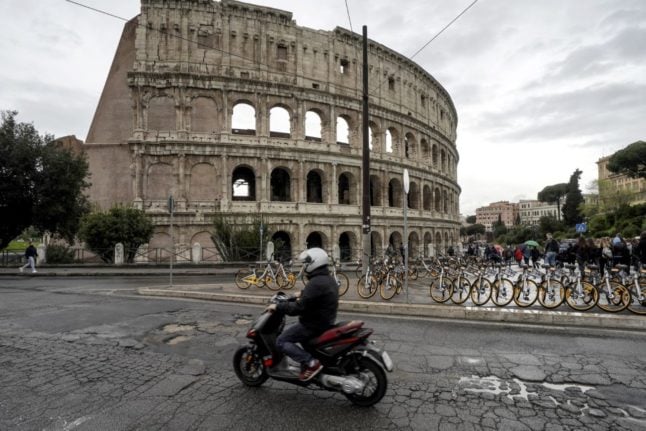There are many things that make the Eternal City an enduring draw for millions of tourists every year, as well as for new residents – but modern innovations are not generally known to be among them.
So the results of a new study ranking Rome as among the least ‘smart’ cities in the world may not come as too much of a surprise to anyone familiar with it.
In fact, you might think this was appropriate enough for a city where people live amidst 3,000 years of history.
Still, Rome’s particularly low ranking at 133rd place out of 142 cities worldwide – placing between Sao Paolo and Lima – might also seem a little harsh.
The result was in stark contrast to other major European cities: Zurich in Switzerland took the number 1 spot, while Oslo, Geneva, Copenhagen, London and Helsinki all featured in the top ten.
READ ALSO: Milan and Rome ranked ‘worst’ cities for foreigners to move to – again
Madrid was ranked 35th, while Paris came in 49th place. Athens however scored less well, in 120th place, and the Bulgarian capital Sofia came 113th.
Italian cities rank poorly overall, as Milan – seen as Italy’s technological and business hub – came in at a lacklustre 91st, and the university city of Bologna came 78th.
What is this ranking?
The 2024 Smart Cities Index (SCI) is produced by the Smart Cities Observatory – part of the IMD’s Global Competitiveness Center – in partnership with the World Organization for Smart and Sustainable Cities (WeGO).
Researchers combined real-world data and survey responses from residents of 142 cities around the world to show how technology allows cities to improve the quality of life of their population.
However, as the study’s authors point out, it is not just (or strictly) about the cities’ technological aspects.
The survey’s “balanced focus’” was also on “humane dimensions” of smart cities.
They include the overall quality of life, infrastructure, environment, health and safety, public transport, services available to the population, as well as governance.
READ ALSO: Why Milan is a much better city to live in than Rome
The ‘winners’ — cities that ranked the highest — are all “located in areas where social and economic environments are relatively predictable, even against the overall climate of global uncertainties,” the report states.
“They are also cities in which visible initiatives have been taken to facilitate the lives of citizens (e.g., by developing public transport networks or ‘eco compatible’ transport solutions), and to improve the overall ‘quality of life’.”
In that case, this survey seems similar to the many other ‘quality of life’ rankings in which Rome (and Milan) also fares badly every year.
The ranking ranges from ‘AAA’ for ‘smartest’ cities to ‘D’ — the lowest. Rome had a ‘CCC’ rating while Milan was awarded a ‘B’.
Interestingly, included in the survey are not only the best aspects of each city, but also the areas that its residents have designated as ‘priorities’ — that is, the ones that need improvement.
In Rome, the major concerns for residents were recycling, which was a priority for 64 percent according to the study, and public transport, for 62 percent.
Priorities highlighted also included road congestion and air pollution, which were factors bringing down the overall score for Milan, too.
Health services, school education and green spaces were not seen as issues for most Rome residents, meanwhile.
What do you think? Is this criticism justified and, if you live in Rome, do you find the positives outweigh the negatives? Share your thoughts in the comments section below.




 Please whitelist us to continue reading.
Please whitelist us to continue reading.
Member comments